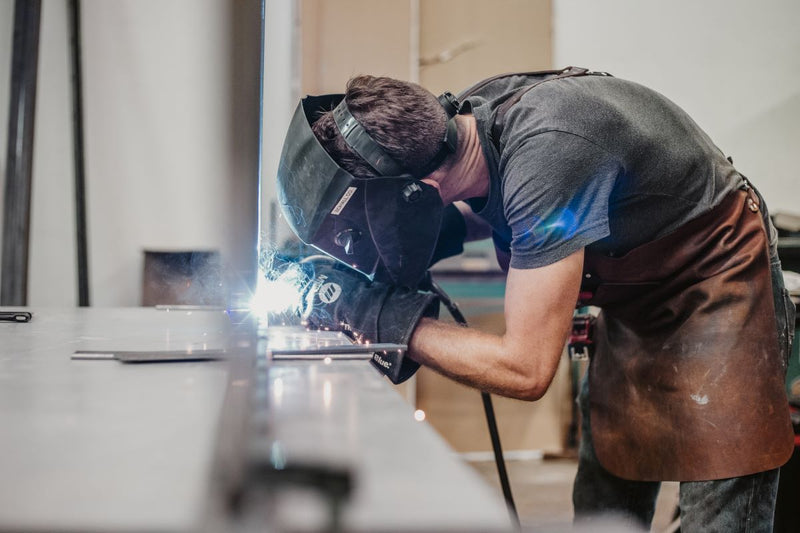Professional Methods for Preventing Weld Undercut Properly
Professional Methods for Preventing Weld Undercut Properly
Blog Article
Understanding the Causes and Solutions for Undercut Welding in Steel Fabrication Procedures
In the world of steel manufacture procedures, the event of undercut welding postures a substantial obstacle that requires a thorough understanding of its reasons and feasible options. The complex interaction of different elements during welding operations can lead to this unwanted sensation, influencing the structural stability and overall quality of the bonded joints - Preventing weld undercut. By studying the origin of undercut welding and checking out reliable remedial steps, makers can boost the standard of their handiwork and ensure the manufacturing of perfect metal components
Usual Reasons of Undercut Welding
Regularly overlooked in metal fabrication, undercut welding happens due to different aspects that demand precise interest and experience to be effectively reduced. Additionally, incorrect welding methods, such as utilizing the wrong welding angle or travel speed, can likewise contribute to undercut formation. The choice of welding parameters, such as voltage, current, and wire feed speed, plays a significant role in the occurrence of undercut welding.
Influence of Incorrect Welding Parameters
Inaccurate welding criteria can significantly endanger the honesty and top quality of bonded joints in metal construction processes. The impact of wrong welding criteria shows up in different methods, resulting in structural weak points and issues in the bonded elements. One crucial aspect influenced by incorrect welding specifications is the penetration deepness of the weld. Not enough warm input due to reduced welding currents or exceedingly high travel speeds can cause insufficient fusion in between the base steels, resulting in incomplete joint infiltration and deteriorated bonds. On the other hand, excessive warmth input triggered by high welding currents or slow traveling speeds can lead to extreme and burn-through reinforcement, producing a fragile and unstable weld framework. Furthermore, wrong criteria such as inappropriate voltage setups or incorrect electrode angles can add to unpredictable weld grain profiles, absence of combination, and increased opportunities of problems like damaging. For that reason, meticulous interest to welding criteria is vital to ensure the manufacturing of high-quality welds with the wanted mechanical residential properties and structural stability.
Impact of Improper Torch Angle
Improper torch angle in welding operations can substantially affect the quality and integrity of the last weld joints in steel construction processes. Damaging is an usual welding flaw where a groove forms along the weld toe, weakening the joint and endangering its architectural stability.
A lantern angle that is as well steep can lead to not enough infiltration, incomplete fusion, and increased spatter. On the various other hand, a torch angle that is too superficial can lead to extreme penetration, burn-through, and distortion of the base product. Preventing weld undercut. Appropriate torch angle is essential for making certain constant weld quality, toughness, and look
To avoid undercutting and various other problems created by incorrect torch angles, welders have to be trained to maintain the right torch angle throughout the welding procedure. Regular surveillance and modification of torch angles throughout welding can help accomplish sound welds with very little problems.
Duty of Inadequate Welding Methods

One more aspect of inadequate welding techniques is improper weld preparation. Inadequate cleansing of the base steels, wrong joint style, or inadequate edge preparation can all contribute to damage welding. Poor securing gas protection or utilizing the wrong kind of gas can result in insufficient combination and the formation of undercut defects.
To resolve the duty of insufficient welding techniques in steel construction processes, it is essential to give thorough training for welders. Appropriate education on welding criteria, joint preparation, and shielding gas option can assist prevent undercut welding and make certain top notch welds in metal manufacture jobs.
Effective Solutions for Undercut Welding
Attending to undercut welding in metal manufacture needs applying efficient solutions to improve weld quality and architectural integrity. Among the primary options to fight undercut is to readjust welding parameters such as voltage, existing, and travel rate to ensure appropriate heat input and combination. By fine-tuning these settings, welders can stop excessive melting of the base metal and navigate to this site filler product, decreasing the chance of undercut formation.
Furthermore, correct joint preparation is vital in avoiding undercut. Making sure clean base web metal surface areas without impurities and using the suitable bevel angle can aid advertise better weld infiltration and lower the risk of undercut - Preventing weld undercut. Utilizing appropriate welding strategies, such as oscillating the torch or weaving, can additionally assist in distributing heat uniformly and loading the weld joint properly, lessening the opportunity of undercut issues
Furthermore, selecting the right welding consumables, consisting of electrodes and filler steels, is essential in reducing undercut. Utilizing materials with proper chemical structures and mechanical residential or commercial properties can add to accomplishing sound welds with very little undercut. Routine assessment and quality assurance actions need to additionally be applied to detect and address undercut issues promptly, ensuring the overall honesty of made steel parts.

Final Thought
Finally, comprehending the causes and solutions for undercut welding in metal manufacture procedures is vital for accomplishing premium welds. By attending to common causes such as wrong welding specifications, incorrect torch angle, and poor welding strategies, welders can stop undercutting and ensure solid, long lasting welds. It is vital to take note of these factors and apply efficient services to boost the general welding process and last product top quality.

Report this page